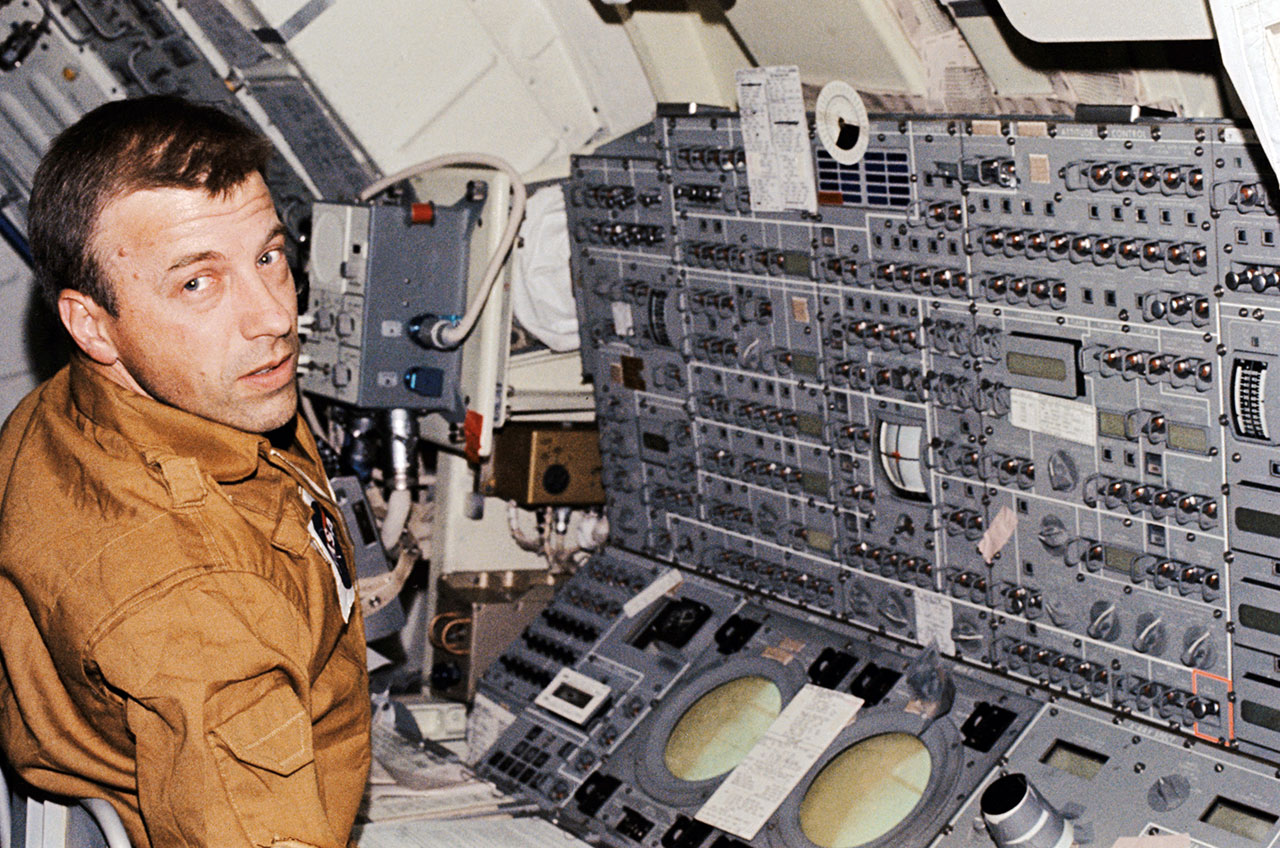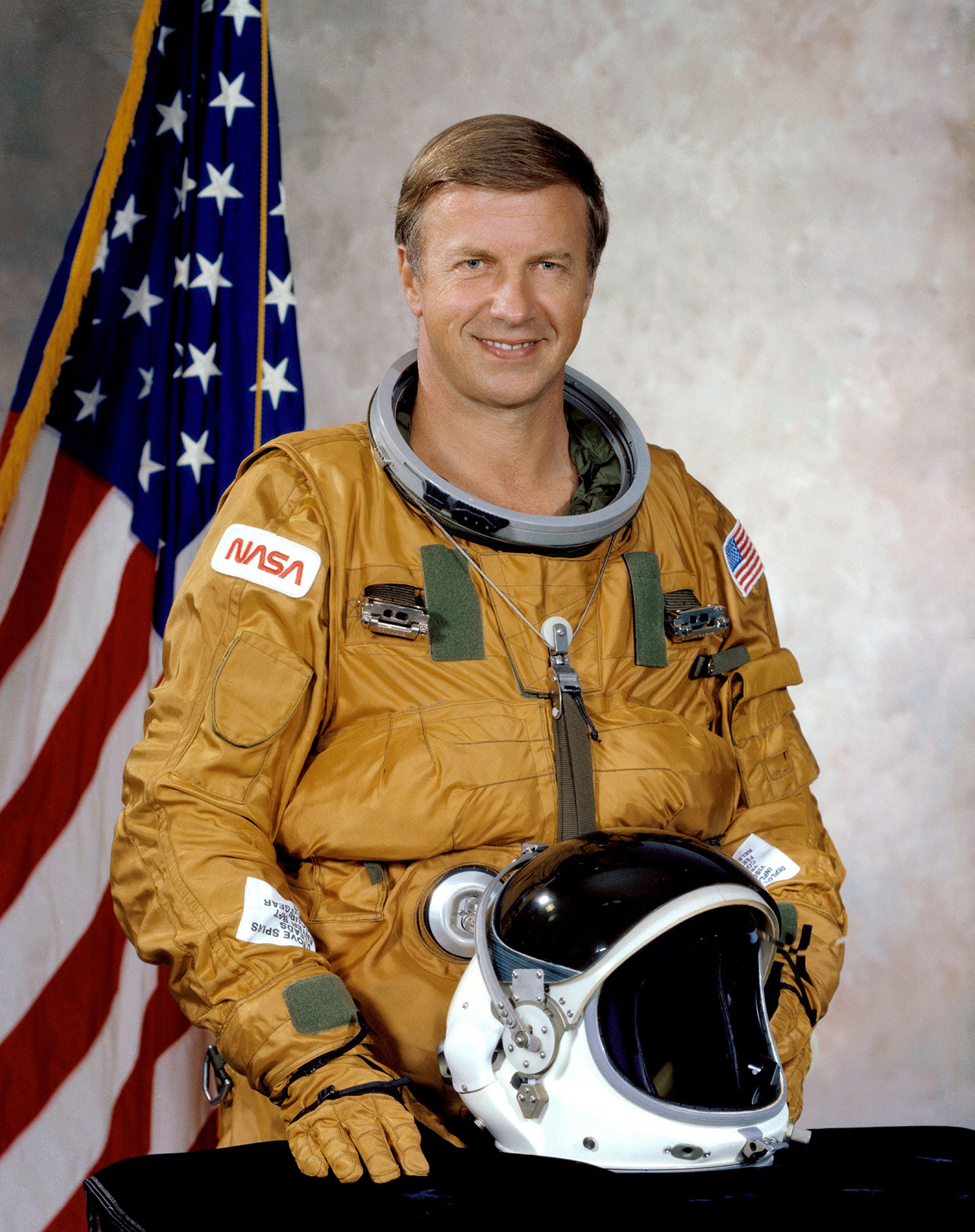Astronaut Paul Weitz, Helped Save Skylab, Commanded Challenger, Dies at 85

Paul Weitz, a former NASA astronaut who lived on board Skylab before commanding the maiden mission of space shuttle Challenger, died on Monday (Oct. 23). He was 85.
Weitz died peacefully at his home in Flagstaff, Arizona, as reported by his daughter, by way of a family friend. He had been diagnosed with Myelodysplastic Syndromes, or MDS, a form of cancer.
A member of NASA's fifth group of astronauts selected in April 1966, Weitz served on the first crew to live and work aboard an American space station. He flew as pilot on the Skylab 2 (SL-2) mission in 1973, helping to save the orbital workshop, while also setting a record for the longest single spaceflight, 28 days, at the time. [Skylab: How NASA's First Space Station Worked (Infographic)]
Ten years later, Weitz led the STS-6 crew on the first flight of Challenger, NASA's second space shuttle orbiter to fly.
In total, Weitz logged 33 days, one hour and 13 minutes in space, including 2 hours and 16 minutes on spacewalks.
Weitz' first launch, on May 25, 1973, was aboard an Apollo command module atop a Saturn IB rocket from Pad 39B at the Kennedy Space Center in Florida. Originally scheduled to lift off the day after Skylab entered orbit, the station was damaged during launch, leading to an 11-day delay while a plan was quickly devised for Weitz, Charles "Pete" Conrad and Joseph Kerwin to repair their home on orbit.
"We had to get the temperatures under control if we were going to salvage Skylab at all," said Weitz in a 2000 NASA oral history.
Breaking space news, the latest updates on rocket launches, skywatching events and more!
During launch, the Skylab workshop's micrometeorite and thermal shield as well as one of its two large solar arrays were torn off, and the remaining array did not deploy.
After arriving at Skylab, Weitz conducted a "stand-up EVA" — his head and body protruding out the Apollo command module's hatch while Kerwin held him by the ankles from inside — in an attempt to free the stuck array.
"We got down near the end of the solar array and I got a hold of it with the shepherd's crook," Weitz recalled. "But what we really hadn't thought about was, in heaving on it, trying to break the thing free, what I was doing, in effect, I was pulling the command module in toward the workshop."
Having no success with that approach, Weitz switched to using a pruning shears-like tool to try to cut a strap holding the array to the side of the station.
"[I] just didn't have enough muscle with that thing, because it was about 6 or 8 feet [1.8 to 2.4 meters] out ahead of me and I was pulling on a line to try to do it. We just couldn't get it through," he said.
Ultimately, Weitz rejoined his crewmates in the command module, leaving the array to be freed on a later spacewalk by Conrad and Kerwin. And, after several failed attempts docking to Skylab, the three men entered the space station and deployed a collapsible parasol through a small airlock to act as a sunshade.
"It turned out [that] when we deployed the parasol, it had four extendable booms on it to put it out in a rectangular shape," Weitz described. "Well, one of them didn't extend all the way. It's kind of like the old-timey legs on a tripod, where they 'click, click, click' and they pulled out [and] one of them didn't extend that last segment."
"So, it didn't cover the whole side of the workshop ... you could tell once the temperatures got down, once we [had] moved into the workshop, you could tell by feel. You could outline exactly where the shadow from the parasol was," he recalled.
Despite the problems, including having to work with limited power until the stuck array was freed during a spacewalk halfway through the mission, Weitz, Conrad and Kerwin completed almost 400 hours of science experiments and captured 29,000 images of the sun. Weitz and Conrad also conducted a one hour and 36 minute spacewalk on June 19, 1973, to retrieve film from an exterior telescope.
Weitz and his two Skylab crewmates returned to Earth on June 22, 1973, splashing down in the Pacific Ocean near their recovery ship, the USS Ticonderoga, after circling the planet 404 times.
Weitz' second spaceflight came a decade after he returned from Skylab. Assigned command of the sixth space shuttle mission, Weitz led the first flight of OV-099, "Challenger," on a 5 day, 23 minute and 42 second flight in April 1983.
Weitz' STS-6 crew, including pilot Karol "Bo" Bobko and mission specialists Story Musgrave and Donald Peterson, were tasked with deploying the first satellite in the Tracking and Data Relay Satellite System (TDRSS). The flight also included the first EVA, or spacewalk, from a space shuttle, performed by Musgrave and Peterson.
"It really was an evaluation flight, pretty much a test flight, obviously not the first one, but, nevertheless, it still was," said Weitz. "We flew the first flight on Challenger, so it was a vehicle shakedown flight also."
After 80 orbits and 2.1 million miles (3.4 million kilometers) traveled, Weitz landed Challenger on the concrete runway at Edwards Air Force Base in California on April 9, 1983.
Paul Joseph "PJ" Weitz was born on July 25, 1932 in Erie, Pennsylvania.
Weitz earned a bachelor of science degree in aeronautical engineering from Pennsylvania State University in 1954 and received his master's in aeronautical engineering from the Naval Postgraduate School in Monterey, California, in 1964.
He was commissioned as an ensign through the NROTC program at Pennsylvania State and served for one year at sea aboard a destroyer before going into flight training and being awarded his wings in September 1956. He served in various naval squadrons, logging more than 7,700 hours flying time — 6,400 hours in jet aircraft, until his selection among the 19 astronauts chosen by NASA in 1966.
Prior to his Skylab flight, Weitz served on the support crew for Apollo 12, the second moon landing mission. Though it was canceled well before assignments were made, Weitz may have been considered for command module pilot on the Apollo 20 moon mission, based on the crew rotation schedule at the time.
Weitz served as deputy chief of NASA's Astronaut Office from 1981 to 1987, deputy director of the Johnson Space Center in Houston from 1987 through 1993, and the acting center director from 1993 to 1994. He was serving as the center's acting associate director when he departed NASA in 1994.
Weitz retired from the U.S. Navy in 1976 with the rank of Captain.
Weitz was a recipient of the NASA Distinguished Service Medal and the Navy Distinguished Service Medal. He was honored alongside his Skylab crewmates in 1973 with the Collier Trophy by the National Aeronautic Association and in 1975 with the Goddard Memorial Trophy by the National Space Club.
Weitz was inducted into the U.S. Astronaut Hall of Fame in October 1997.
Weitz married the former Suzanne M. Berry, with whom he had two children, Matt and Cindy.
Follow collectSPACE.com on Facebook and on Twitter at @collectSPACE. Copyright 2017 collectSPACE.com. All rights reserved.

Robert Pearlman is a space historian, journalist and the founder and editor of collectSPACE.com, a daily news publication and community devoted to space history with a particular focus on how and where space exploration intersects with pop culture. Pearlman is also a contributing writer for Space.com and co-author of "Space Stations: The Art, Science, and Reality of Working in Space” published by Smithsonian Books in 2018.
In 2009, he was inducted into the U.S. Space Camp Hall of Fame in Huntsville, Alabama. In 2021, he was honored by the American Astronautical Society with the Ordway Award for Sustained Excellence in Spaceflight History. In 2023, the National Space Club Florida Committee recognized Pearlman with the Kolcum News and Communications Award for excellence in telling the space story along the Space Coast and throughout the world.


